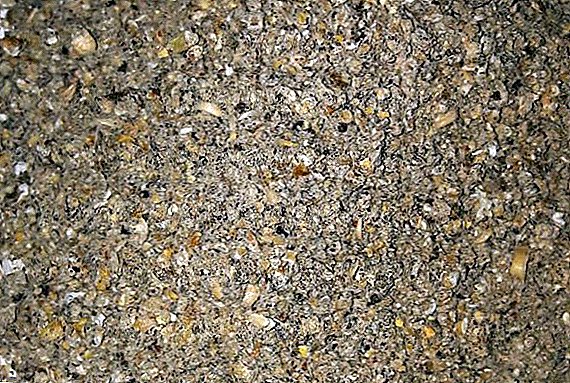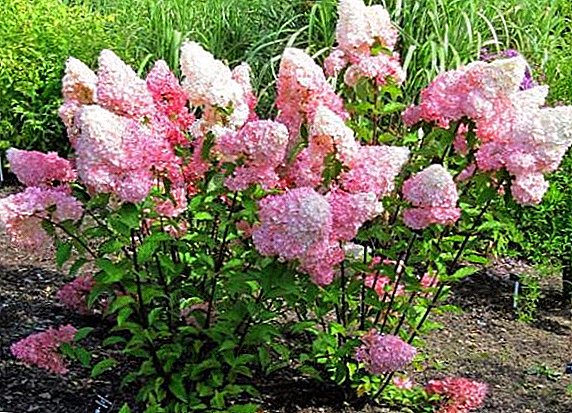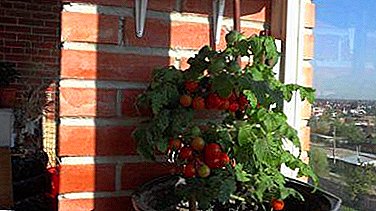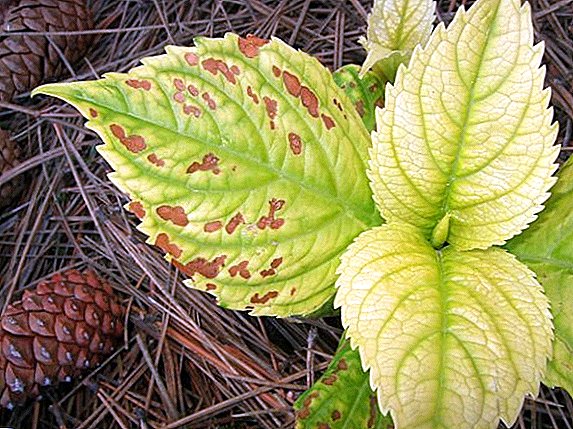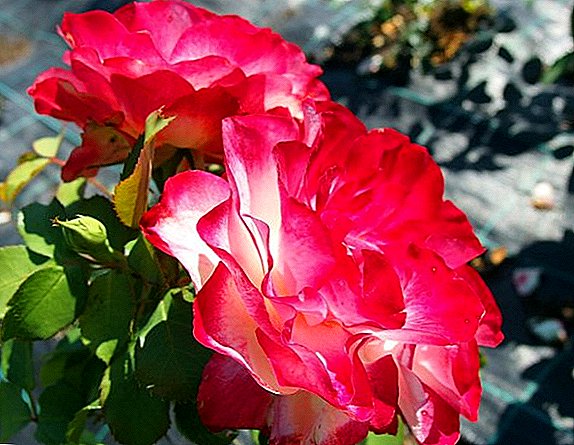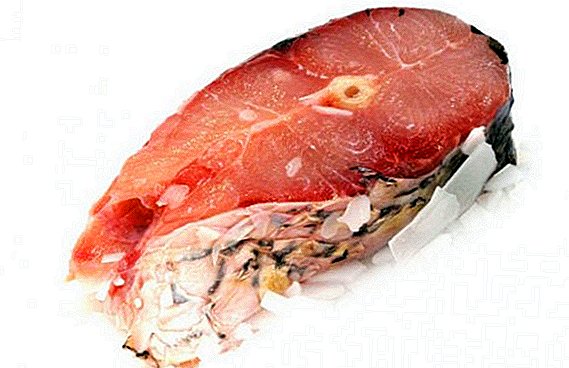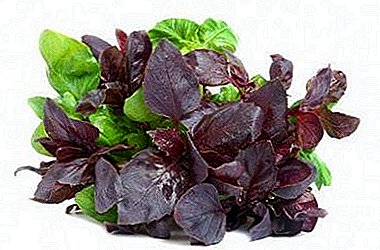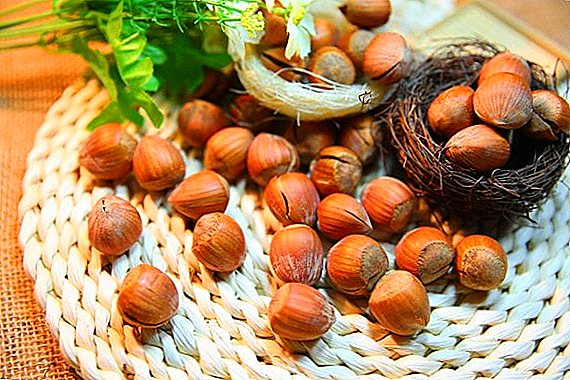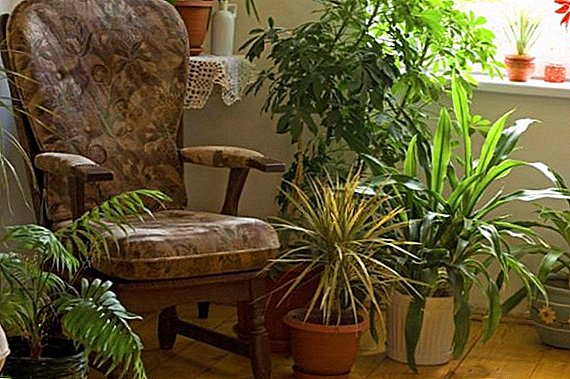 Many people like to decorate the room with flowers. But decorating a dark room is not always easy: you need to find such plants so that the conditions in which you are going to place them fit. In this case, only the most undemanding to light flowers collected in this article will do.
Many people like to decorate the room with flowers. But decorating a dark room is not always easy: you need to find such plants so that the conditions in which you are going to place them fit. In this case, only the most undemanding to light flowers collected in this article will do.
Maidenhair
 Adiantum belongs to the genus Adiant and is a perennial fern. There are more than 200 different species that are included in the Pteris family. In the wild, they are most often found in Western Europe, North America, as well as in the Crimean mountains.
Adiantum belongs to the genus Adiant and is a perennial fern. There are more than 200 different species that are included in the Pteris family. In the wild, they are most often found in Western Europe, North America, as well as in the Crimean mountains.
Did you know? The name of the fern was due to its water-repellent properties. Translated from the Greek language, it means "do not soak."
Fern loves waterTherefore, it grows mainly near streams and various water bodies, as well as in rock crevices. Despite such a specific habitat, it is considered the most common "home" fern. Ground plants have creeping stems that can reach 50 cm in length. The color palette varies only in green shades.  Leaves:
Leaves:
- peristosis;
- fan-shaped;
- asymmetrical.
Each species is different in size, stem length, colors and even structure. Fern leaves have a water-repellent structure. This allows the plant to remain dry in any environment, but the roots are saturated with moisture.
Reproduction occurs through dispute. They are located on the back of the sheet plate. If you turn it over, you can see brown spots - these are spore-bearing zones.  Caring for a fern is to determine the most successful location and the correct frequency of irrigation. This is a shade-loving plant, which means that it should be placed away from windows. In the heat, you can water it 2-3 times a week, the rest of the time it will be enough 1 time.
Caring for a fern is to determine the most successful location and the correct frequency of irrigation. This is a shade-loving plant, which means that it should be placed away from windows. In the heat, you can water it 2-3 times a week, the rest of the time it will be enough 1 time.
Try to rearrange the pot as little as possible, the adiantum does not like it. Plant need keep you coolespecially in summer. Optimum temperature: 15-20 degrees. Adiantum should be transplanted as needed by selecting a larger pot size. At the same time the soil is recommended more friable.
At home, you can grow different types of fern: polynochorus, pellet, nephrolepis, davallium, tirtomium, platicerium, pteris.
Chlorophytum
 Chlorophytum is called one of the most unpretentious plants. This is a perennial grassy shrub whose leaves have an elongated narrow shape. The color is always the same: green with white stripes along the entire length.
Chlorophytum is called one of the most unpretentious plants. This is a perennial grassy shrub whose leaves have an elongated narrow shape. The color is always the same: green with white stripes along the entire length.
In the wild, it lives in the subtropics and tropics of America, in damp areas near rivers and lakes. Dimensions of one bush: 50 to 50 cm. Shoots are about 100 cm, sometimes smaller. They go down from the center of the plant. 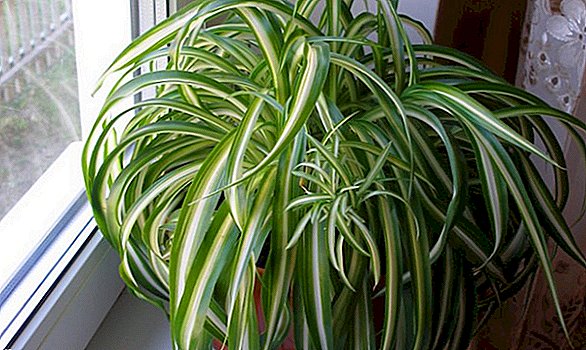 Propagated through side shoot. At their ends are "sockets" that have their roots. If they are planted in the ground, they will quickly grow and give rise to a new chlorophytum. The bush quickly adapts to the new conditions of life, but in the care, pay attention to certain factors.
Propagated through side shoot. At their ends are "sockets" that have their roots. If they are planted in the ground, they will quickly grow and give rise to a new chlorophytum. The bush quickly adapts to the new conditions of life, but in the care, pay attention to certain factors.
Requires abundant watering, especially in summer. If brown spots are observed on a piece, this means that the ground is either too wet or too dry. It is necessary to control this process and, if necessary, cut off the brown part of the sheet.  Indoor plant shade-loving, but at the same time and unpretentious: it accepts any lighting conditions. The flower feels good not only in the shade, but also in the light, so the location of the pot does not matter. There are hollows on the leaves of chlorophytum, where dust periodically accumulates: it must be removed.
Indoor plant shade-loving, but at the same time and unpretentious: it accepts any lighting conditions. The flower feels good not only in the shade, but also in the light, so the location of the pot does not matter. There are hollows on the leaves of chlorophytum, where dust periodically accumulates: it must be removed.
Such a flower in the house or office can be placed not only for decorative purposes, but also for use: it is considered excellent air purifier.
Clivia
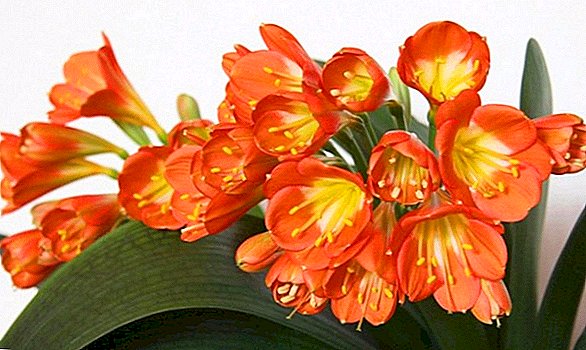 Evergreen perennial clivia came to us from the coasts of South Africa. It belongs to amaryllis and differs from other members of this family by the presence of fleshy leaves. Together they create a stem, parts of which are woven together.
Evergreen perennial clivia came to us from the coasts of South Africa. It belongs to amaryllis and differs from other members of this family by the presence of fleshy leaves. Together they create a stem, parts of which are woven together.
When choosing the location of the flower, you need to avoid sunny places, otherwise the leaves will burn with rays. The optimum temperature is 23 degrees in summer, in winter this figure is best reduced to 15 degrees.  The roots of the plant are massive and juicy, they do not tolerate frequent transplants. Flowers of bright tones stand out effectively against a green background: from orange to red. The bells are collected in the inflorescence, which takes the form of an umbrella. Such inflorescences on the bush may be several, and each of them has 15-30 flowers.
The roots of the plant are massive and juicy, they do not tolerate frequent transplants. Flowers of bright tones stand out effectively against a green background: from orange to red. The bells are collected in the inflorescence, which takes the form of an umbrella. Such inflorescences on the bush may be several, and each of them has 15-30 flowers.
Even after flowering, the period of which is 3-4 weeks, the plant remains aesthetically attractive due to the berries. In the home or office, they appear as a result artificial pollination.  It is better to defend the water before watering for clivia. Between irrigation, you need to take short breaks to the land had time to dry. The pot should be tight. Place the plant shallowly inwards to prevent leaf rot.
It is better to defend the water before watering for clivia. Between irrigation, you need to take short breaks to the land had time to dry. The pot should be tight. Place the plant shallowly inwards to prevent leaf rot.
Important! Clivia is poisonous. It will be absolutely safe if you do not use it inside.
Epipremnum
 Room epipremnum - shade-loving and unpretentious flower - belongs to the genus Epipremnum, family Aroid. Most often found in tropical forests of India, Australia and Asia.
Room epipremnum - shade-loving and unpretentious flower - belongs to the genus Epipremnum, family Aroid. Most often found in tropical forests of India, Australia and Asia.
Did you know? On the epipremnum grow beautiful flowers, but they are found only in the wild. In the house it is impossible to recreate the conditions for the appearance of inflorescences.
There are many species of the family: lianas, whose leaves are evenly distributed throughout the stalk, tall perennials or climbing flowers.  Epipremnum is a vine that winds around objects with aerial roots and thus extends high upwards. In the wild, the stems can rise to a height of 15 m. At home, the plant can fill the walls of the roomif given him the right direction.
Epipremnum is a vine that winds around objects with aerial roots and thus extends high upwards. In the wild, the stems can rise to a height of 15 m. At home, the plant can fill the walls of the roomif given him the right direction.
Epipremnum climbs on any surface, but the support overgrown with moss is best suited for it. It will provide a moist environment for the roots of the vine. Bright green leaves are placed alternately on the stem, their shape is heart-shaped. Often there are spots and various strips of light shades.  Shoots need to be constantly cut so that they branch out and grow more and more. You can regulate this process yourself. Thus, you can create any composition that will decorate a window or balcony.
Shoots need to be constantly cut so that they branch out and grow more and more. You can regulate this process yourself. Thus, you can create any composition that will decorate a window or balcony.
We advise you to familiarize yourself with the options of indoor plants for the children's room and bedroom.
Monstera
 Monstera is probably the most famous homely shade-loving plant. Everyone recognizes him: tall with large, rugged leaves. It belongs to the family of Aroids. In nature, common in tropical forests of America.
Monstera is probably the most famous homely shade-loving plant. Everyone recognizes him: tall with large, rugged leaves. It belongs to the family of Aroids. In nature, common in tropical forests of America.  In room conditions Monstera has a height of mostly 30 cm, but can grow to the ceiling of the apartment. It belongs to the class of vines, which means it is creeping. To give the plant a vertical static look, you have to create some kind of support for it. Such a procedure can not be carried out, but then the monstera will take too much space in the apartment.
In room conditions Monstera has a height of mostly 30 cm, but can grow to the ceiling of the apartment. It belongs to the class of vines, which means it is creeping. To give the plant a vertical static look, you have to create some kind of support for it. Such a procedure can not be carried out, but then the monstera will take too much space in the apartment.  Aerial roots should be sent down to the ground, which will become a source of nutrients for them. In the room where it blooms, there should be a warm temperature. The plant likes shade, but do not put it in too dark places, otherwise the sheets will remain small.
Aerial roots should be sent down to the ground, which will become a source of nutrients for them. In the room where it blooms, there should be a warm temperature. The plant likes shade, but do not put it in too dark places, otherwise the sheets will remain small.
Important! If the aerial roots fail to be planted in the soil, then each of them must be placed in a small bag of soil.
The leaves are the main pride of the plant. They need special care: constant sprinkling, especially in hot weather. In addition, they must be cleaned of dust with soft water to avoid white spots.
Begonia
 The Begonia family has about 1600 species. One of the brightest representatives is begonia, which also has many varieties. There are annual, perennial flowers, grasses and shrubs.
The Begonia family has about 1600 species. One of the brightest representatives is begonia, which also has many varieties. There are annual, perennial flowers, grasses and shrubs.
Originally from tropical rain forests. Accordingly, it loves moisture. It must be provided in sufficient quantity: in the summer, every time the earth has dried by 1.5 cm. It is not necessary to water in winter, the plant falls into a kind of hibernation. At this time, begonia is placed in peat.  Reproduction occurs with the help of seeds, cuttings or leaves. You can take any part of the sheet: the plant will still recover.
Reproduction occurs with the help of seeds, cuttings or leaves. You can take any part of the sheet: the plant will still recover.
Did you know? Begonia was named after one of the governors of Haiti, M. Begon.
Begonia is great for decorating home or office, as it is forever blooming. Depending on the type of leaves and flowers come in different shades, with or without patterns. You can also choose one of the varieties of begonia, given its size. Some species reach only 3 cm, others do not fit even on the desktop.  The flowering period lasts most of the year, while the plant is abundantly covered with bright buds. Begonia can receive significant burns of the leaves, if it is under the rays of the scorching sun. The air temperature should be approximately 20 degrees. You should also regularly conduct dressing.
The flowering period lasts most of the year, while the plant is abundantly covered with bright buds. Begonia can receive significant burns of the leaves, if it is under the rays of the scorching sun. The air temperature should be approximately 20 degrees. You should also regularly conduct dressing.
Anthurium
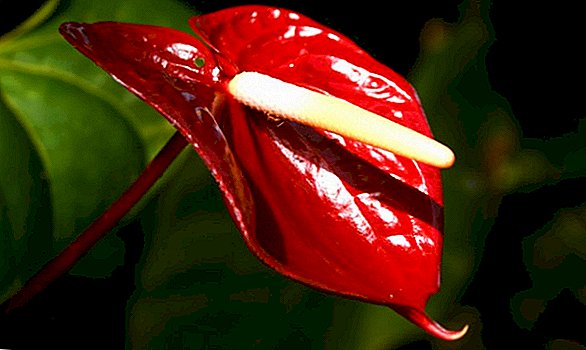 Anthurium belongs to the family of Aroids. In the wild, they are found in the tropical and subtropical forests of America. Anthurium in Greek means "flower" and "tail." The plant is poisonous, so it's worth it. handle carefully.
Anthurium belongs to the family of Aroids. In the wild, they are found in the tropical and subtropical forests of America. Anthurium in Greek means "flower" and "tail." The plant is poisonous, so it's worth it. handle carefully.  They love the anthurium for its exotic flowers: a white or yellow cob envelops a bright red, white or pink petal, which also has a glossy finish. In fact, the flower of anthurium is the yellow spadix (it consists of small flowers), and the large petal that attracts attention is just a bract.
They love the anthurium for its exotic flowers: a white or yellow cob envelops a bright red, white or pink petal, which also has a glossy finish. In fact, the flower of anthurium is the yellow spadix (it consists of small flowers), and the large petal that attracts attention is just a bract.  It is necessary to attract the attention of insect pollinators, it also contains additional nutrients. Water the plant at a moderate frequency, while sprinkling the sheets. Regular, but not frequent (1 time per month) feeding is necessary. Humidity is high, the temperature should be about 20 degrees.
It is necessary to attract the attention of insect pollinators, it also contains additional nutrients. Water the plant at a moderate frequency, while sprinkling the sheets. Regular, but not frequent (1 time per month) feeding is necessary. Humidity is high, the temperature should be about 20 degrees.
Spathiphyllum
 An evergreen perennial plant called spathiphyllum belongs to the family of Aroids. It is actively used as indoor plants, as it perfectly adapts to home conditions. In nature, most often found in America.
An evergreen perennial plant called spathiphyllum belongs to the family of Aroids. It is actively used as indoor plants, as it perfectly adapts to home conditions. In nature, most often found in America.  On thin legs of bright green color contains long narrow leaves. From above towering attractive white flowers. Spathiphyllum is one of the most shade-loving indoor plants, since even a single hit of a ray of light on a piece of paper can cause drying.
On thin legs of bright green color contains long narrow leaves. From above towering attractive white flowers. Spathiphyllum is one of the most shade-loving indoor plants, since even a single hit of a ray of light on a piece of paper can cause drying.  However, it is impossible to completely restrict the flow of light, otherwise the plant will fade. The treatment consists in frequent watering with soft or distilled water: in the winter several times a week, and in the summer in a day. It is also worth carrying out top dressing of the soil.
However, it is impossible to completely restrict the flow of light, otherwise the plant will fade. The treatment consists in frequent watering with soft or distilled water: in the winter several times a week, and in the summer in a day. It is also worth carrying out top dressing of the soil.
Ficus
Ficus are home to the tropics of Asia, Africa, America and Australia. There are many types of plants: woody, shrub, and creeping. Most often they are evergreen, but sometimes you can meet representatives who have leaves fall.  The advantages of ficus include its ability to quickly clean the air.
The advantages of ficus include its ability to quickly clean the air.
Learn more about the varieties of rubber ficus, the characteristics of its cultivation, diseases.
In the care you need to remember about three things: the plant does not tolerate drafts, waterlogging of the soil and bright light.  Highlight the permanent habitat of ficus in the house, he does not like rearrangements. The optimum temperature for it is 25 degrees.
Highlight the permanent habitat of ficus in the house, he does not like rearrangements. The optimum temperature for it is 25 degrees.
One of the most popular species of ficus in houseplant production is Benjamin's ficus. We advise you to read about the intricacies of care, possible problems, diseases and pests.
In the summer it is better to make perennial on the air. In between watering the soil should have time to dry.  The owner of the ficus can independently form the crown, timely cutting the stalks and tying them.
The owner of the ficus can independently form the crown, timely cutting the stalks and tying them.
Aspidistra
 In nature, aspidistra lives in dark places. It can be found in the tropics of East Asia. The plant has no stem, it consists entirely of leaves and is a short bush.
In nature, aspidistra lives in dark places. It can be found in the tropics of East Asia. The plant has no stem, it consists entirely of leaves and is a short bush.
Did you know? In Asia, the plant is called "Snake Pointer." This name is due to the fact that the leaves of aspidistra always sway when a snake crawls under them.
For decorative varieties of aspidistra is a kind of high. It is the only one suitable for keeping in indoor conditions. It is possible to distinguish a bush of this species by white or cream strips running along the whole leaf.  Aspidistra is able to bloom, but it happens very rarely: once a year for one day. But on the plant you can see attractive fruit, but only after artificial pollination.
Aspidistra is able to bloom, but it happens very rarely: once a year for one day. But on the plant you can see attractive fruit, but only after artificial pollination.
In the care of the bush completely unpretentious. It is ideal for rooms that are hardly illuminated by the sun. Watering is moderate, the plant does not require top dressing.
All listed copies are most suitable for keeping in a dark room. You must remember that not a single plant can do without light, but many of them are able to thrive in conditions of minimum illumination. Pick one of the shade-tolerant houseplants by name and photo, based on your taste and possibilities.


